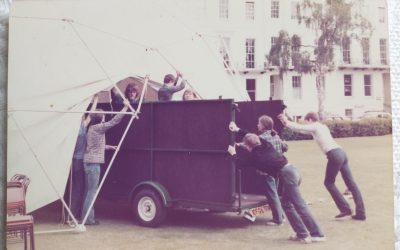The news that Alex Ross is now the only full-time classical music critic on an American magazine has got me thinking about the changing status of reviews.
Gone are the days when an ‘important’ concert would routinely be reviewed by all the major papers. When I was a young professional I used to walk down to a newsagent’s shop on the morning after a big concert – yes, on the very morning after a concert! – to see what the critics had made of my or my group’s performance. I rifled secretly through the arts pages to see how many papers were worth buying. Often they were all worth buying.
Reviews were very useful as ‘calling cards’ to attract the interest of promoters, festival directors, grant-making bodies and so on. We used to keep stacks of photocopied reviews and send them around. In a profession where there’s no straightforward way to prove your credentials, reviews were the best way we knew.
With the advent of the internet, music websites sprang up and offered their own reviews. Sometimes those were the only reviews of one’s concert. But managers were very snooty about ‘web’ reviews. We were told not to bother sending ‘links’ because ‘nobody would take them seriously’. I remember applying for a foreign work visa and being told that only hard copies of reviews in prestigious newspapers were acceptable proof that one had some reputation as a performer.
That was fine when there were plenty of newspaper reviews to send. But then press coverage of classical concerts started to dwindle at an alarming rate. A year might go by with lots of concerts but no newspaper reviews at all. Debut concerts, premieres and fiendishly clever programming (usually guarantees of press interest) were no longer routinely reviewed. Newspaper reviews sometimes took three, four, five days to appear, by which time everyone had sort of lost interest. Links started to take the place of hard copy reviews.
Now it’s often said that ‘everyone is a critic’. People voice their opinions on blogs, Twitter and Facebook and more. At the time of writing, however, I’m not aware that any arts manager or festival director would take seriously a review or a complimentary remark posted online by marmaladegirl82, dolphins’R’us or the ProppingUpTheBar blog (to make up some examples). We seem to be in a phase where, in the absence of ‘proper’ newspaper reviews, high-status online reviews are acceptable, but punters’ comments are not.
Where’s it all going? Nobody knows for sure. Soon a festival director may merely need to know that your performance garnered 5,347 ‘likes’ on Facebook.




I cut my teeth insofar as classical music is concerned by reading Gramophone magazine. To be sure, many interesting performances were thereby brought to my attention (including the Domus recordings). Looking back on it, however, I feel now that those ‘expert’ reviews misguided me more than they helped. I now see how reviewers there were in thrall to certain performers, and, in my opinion, entirely dismissive of others for reasons that had nothing to do with artistic merit. Indeed, had I continued to hew closely to Gramophone’s predilections I would have remained ignorant of some of the most important recorded performances I have ever encountered (RIP Ivan Moravec). So, as far as I can tell, writing for an established print periodical connotes little in the way of taste. If I were issuing visas I would be more interested in where a musician has performed than in what an anonymous critic has opined.
Thank you, Steve – a very important comment which I hope lots of people will read. However, may I point out that ‘where a musician has performed’ is not under their control as much as you’d imagine. Just like reviewers, most concert promoters and festival directors have their favourites, their own agendas, and are the slaves of fashion like everyone else. They’re often guided by ‘who’s going to fill the hall’; that will be to the advantage of certain sorts of artists, and will rule out others. No matter how much an individual artist may long to play in a certain place, their face may not fit or their style may not be currently popular. So a list of where someone has played is not necessarily a guide to absolute artistic merit, at least no more so than a collection of their reviews.
A small coterie of critics has always had disproportionate influence.
They always wrote mainly for each other. But the collapse in readership of their media means they now have almost no feeling of being read by the general public. They can be sure of being read only by their fellows.
This leads to the ludicrous situation today where a well-known musician who is in a relationship with a music critic receives rave reviews for joyless, insightless, pedestrian performances. Union rules in the Critics Circle mean that nothing short of adulation may be accorded – presumably until the relationship breaks down, at which point, one imagines, all the infelicites in her playing will suddenly become apparent.
Other performers, genuinely talented, are overlooked. So the sooner this corrupt, self-serving, and snob-ridden system is exploded by citizen journalism, the better.
Paul: not sure if you have a particular example in mind? Whatever the failings of newspaper critics, I’m not aware of any artist who is ‘in a relationship with a music critic’ and receives rave reviews for ‘pedestrian performances’. Apart from that, you’re quite right that genuinely talented performers can be overlooked, even by mistake or chance. Citizen journalism however has problems of its own – such as untalented people becoming celebrities because of their personalities, looks, or mastery of social media.